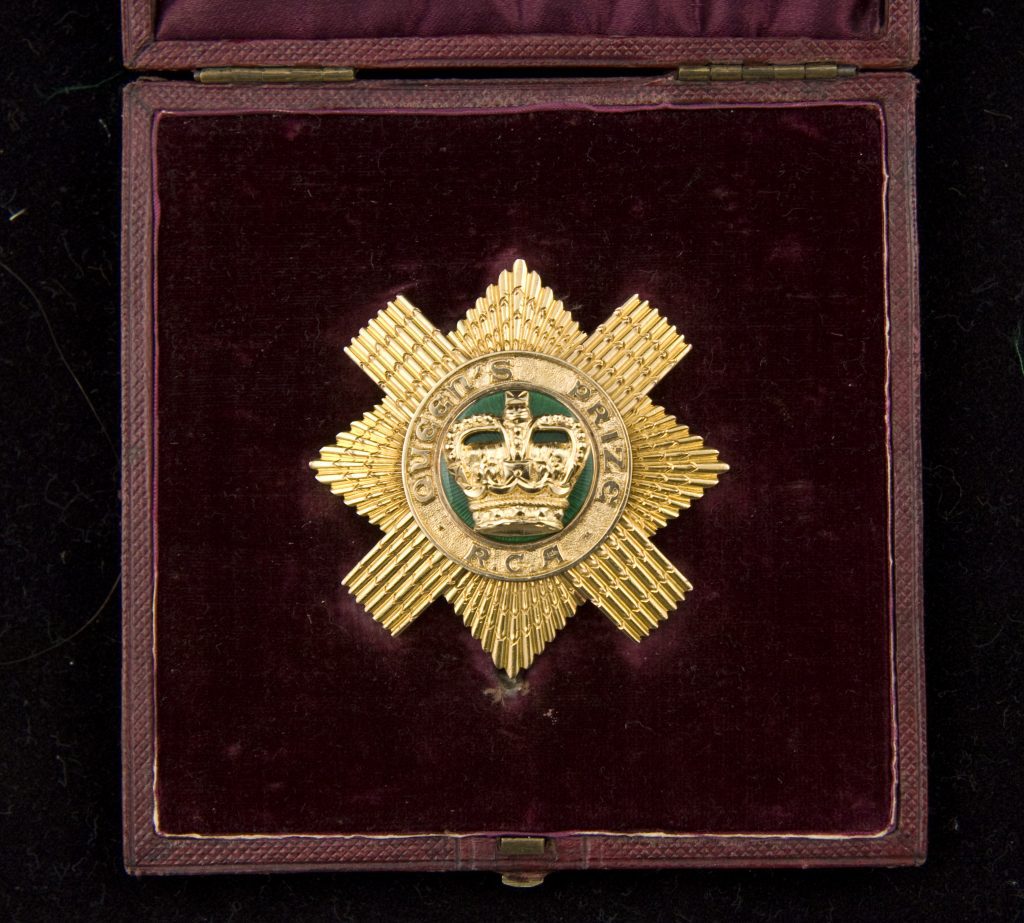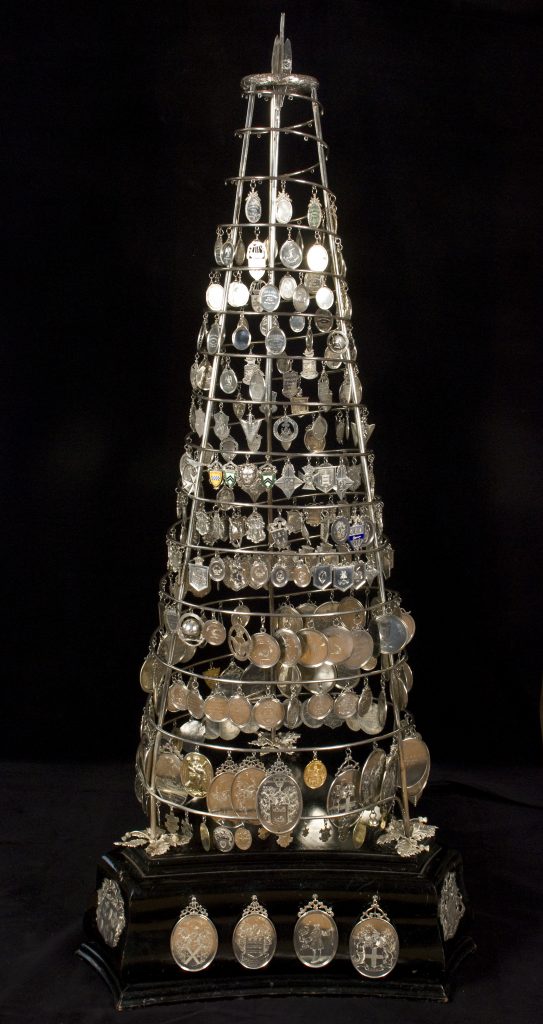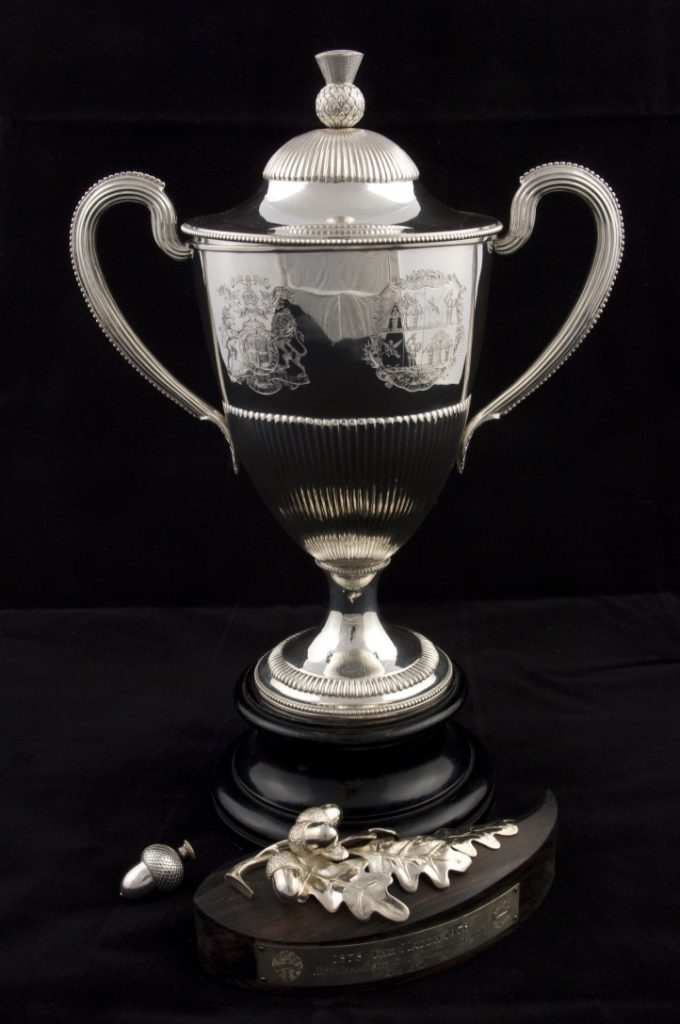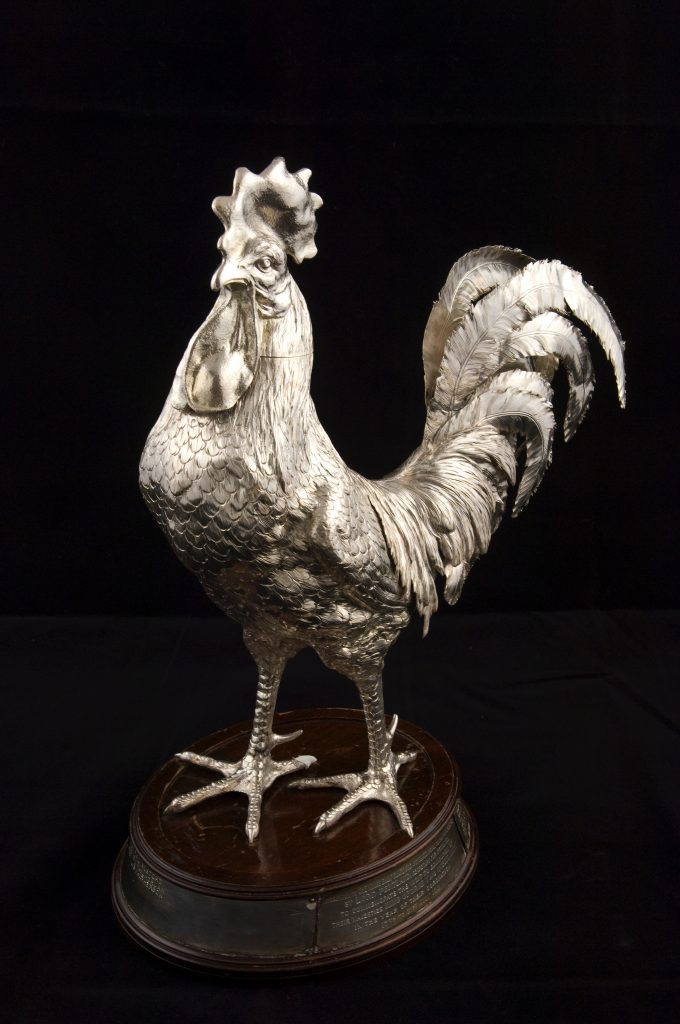The unique Collection of The Royal Company comprises pictures (many of which are portraits), sculpture, silver and artefacts pertaining to The Royal Company and archery more generally. Please see Archers’ Hall for information about the Chandelier.
Principal Artwork
The best known portraits are of: Dr Nathaniel Spens of Craigsanquhar by Sir Henry Raeburn; Sir James Pringle, 4th Bart by David Martin; James, 5th Earl of Wemyss attributed to Allan Ramsay; William St Clair of Roslin by Sir George Chalmers Bart; Unidentified Officer of The Royal Company of Archers by John de Ryck and; HM Queen Elizabeth II by Nicky Phillips.
Dr Nathaniel Spens of Craigsanquhar by Sir Henry Raeburn
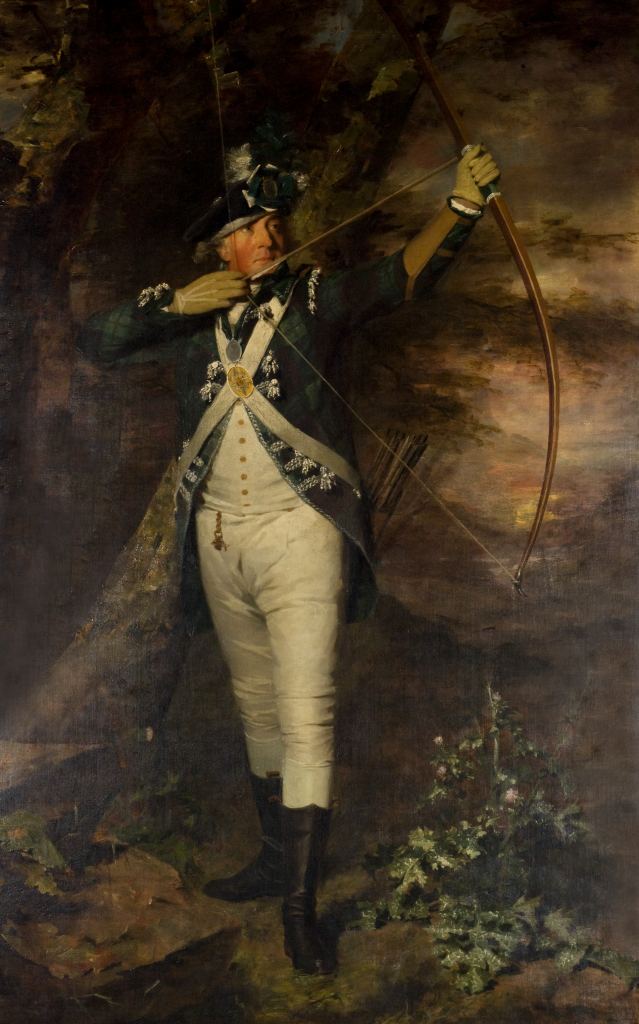
Although the portrait has seldom left Archers’ Hall, it is more widely known, having been reproduced by the Edinburgh engraver and printmaker John Beugo, himself an Archer, in 1796. The print, for example, may be seen in both the Royal Collection and the National Galleries of Scotland.
Dr Spens (1728-1815) of Craigsanquhar, Fife was elected to the Royal Company in 1750 at the age of 22. He was to be an Archer for 65 years. By the 1770s he was firmly established as one of the Royal Company’s most outstanding archers. He won the Silver Bowl four times, the Edinburgh Arrow three times, the Musselburgh Arrow in 1777 and the King’s Prize in 1793. He won the Goose Prize ten times, the last at the age of nearly 80 in 1807. He was made President of the Council in 1809 and in 1810 a dinner was held to celebrate the 60th anniversary of his membership. The Royal Company still compete for the Spens Medal, instituted in 1833 in his memory. Dr Spens was also a distinguished member of the medical profession, being President of the Royal College of Physicians, Edinburgh from 1794-1796. He was a man of fashion too: Dr Spens is said to have been the first person to carry an umbrella in Edinburgh.
Sir Henry Raeburn (1756-1823), a native of Edinburgh, was one of the greatest of all Scottish portrait painters, capturing many of the leading lights of the Scottish Enlightenment. In 1784 he moved to London where he met the important portrait painter Joshua Reynolds. He spent some time in Italy but returned to Edinburgh in 1787 where he began painting portraits of the rich, famous and important people of the day. Perhaps best known for his portraits of ‘The Reverend Robert Walker Skating on Duddingston Loch’ and of Sir Walter Scott, his distinctive portraits record around 1,000 eminent individuals. He was elected to the Royal Company in 1791 and was knighted, the year before he died, by King George IV during his visit to Edinburgh in 1822.
Sir James Pringle by David Martin
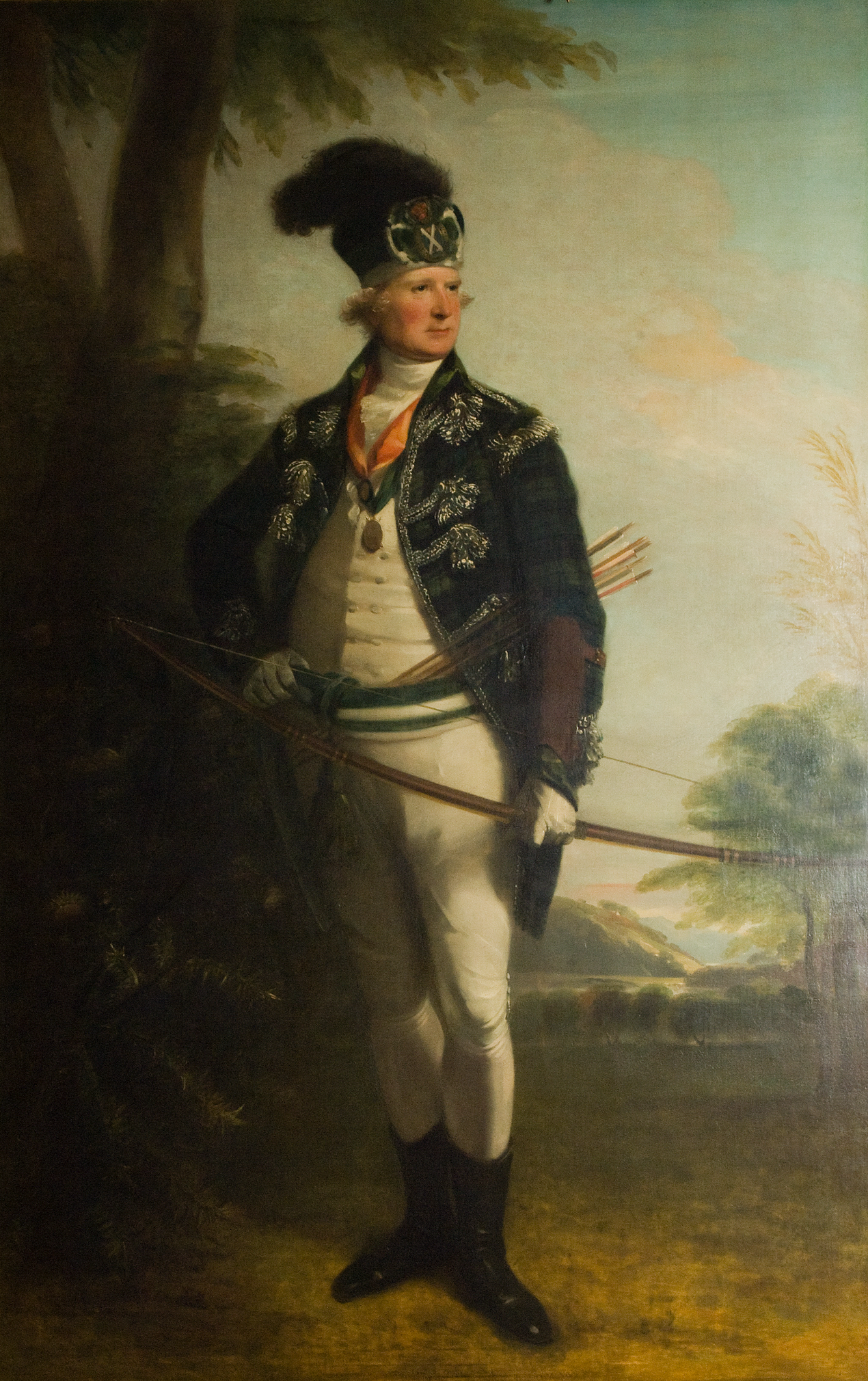
James, 5th Earl of Wemyss attributed to Allan Ramsay
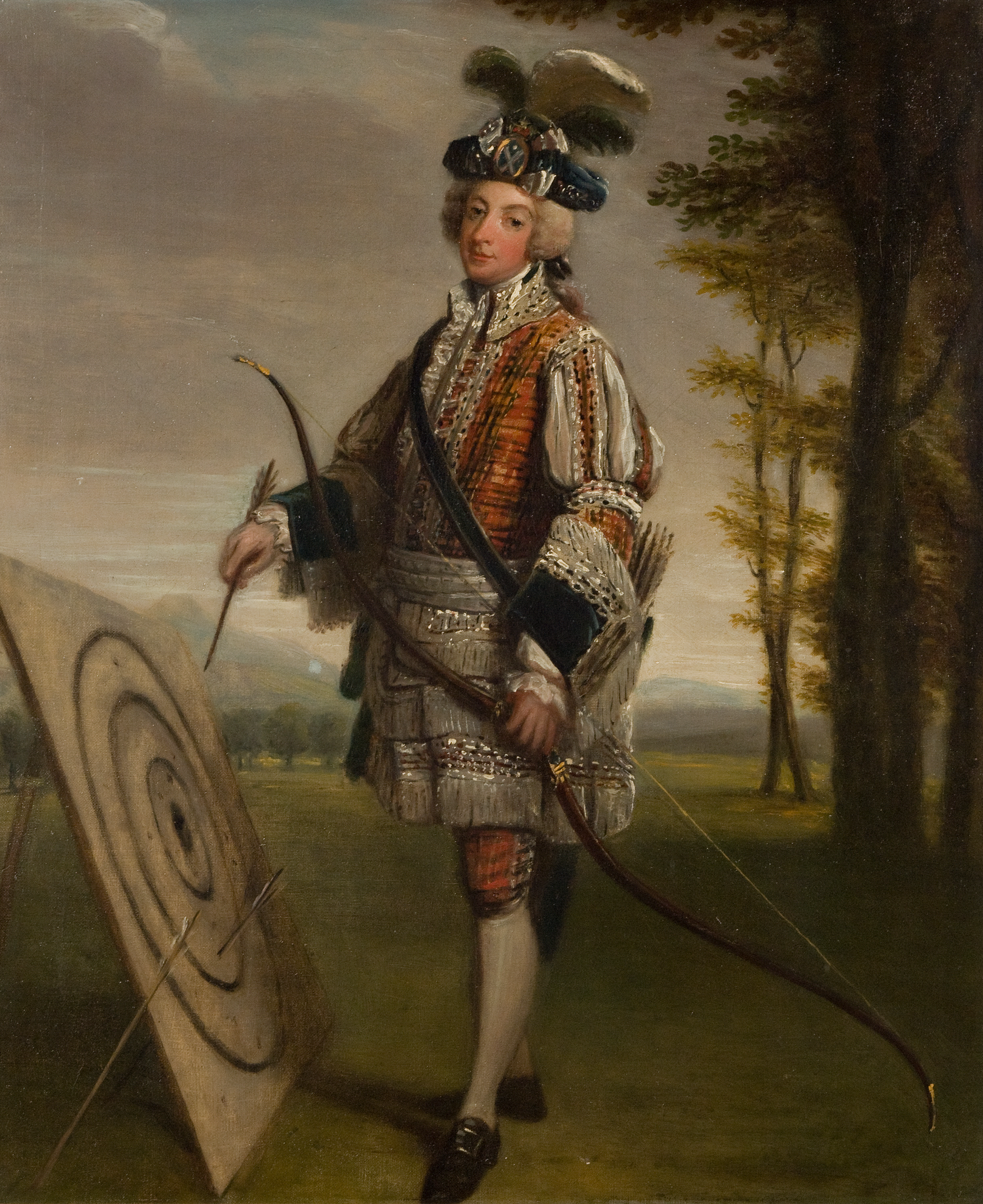
William St Clair of Roslin by Sir George Chalmers
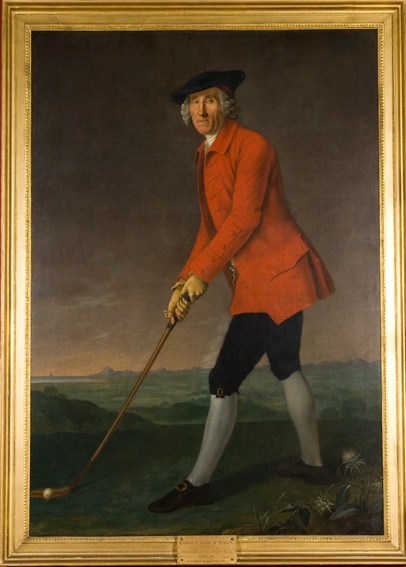
Unidentified Officer of The Royal Company of Archers by John de Ryck
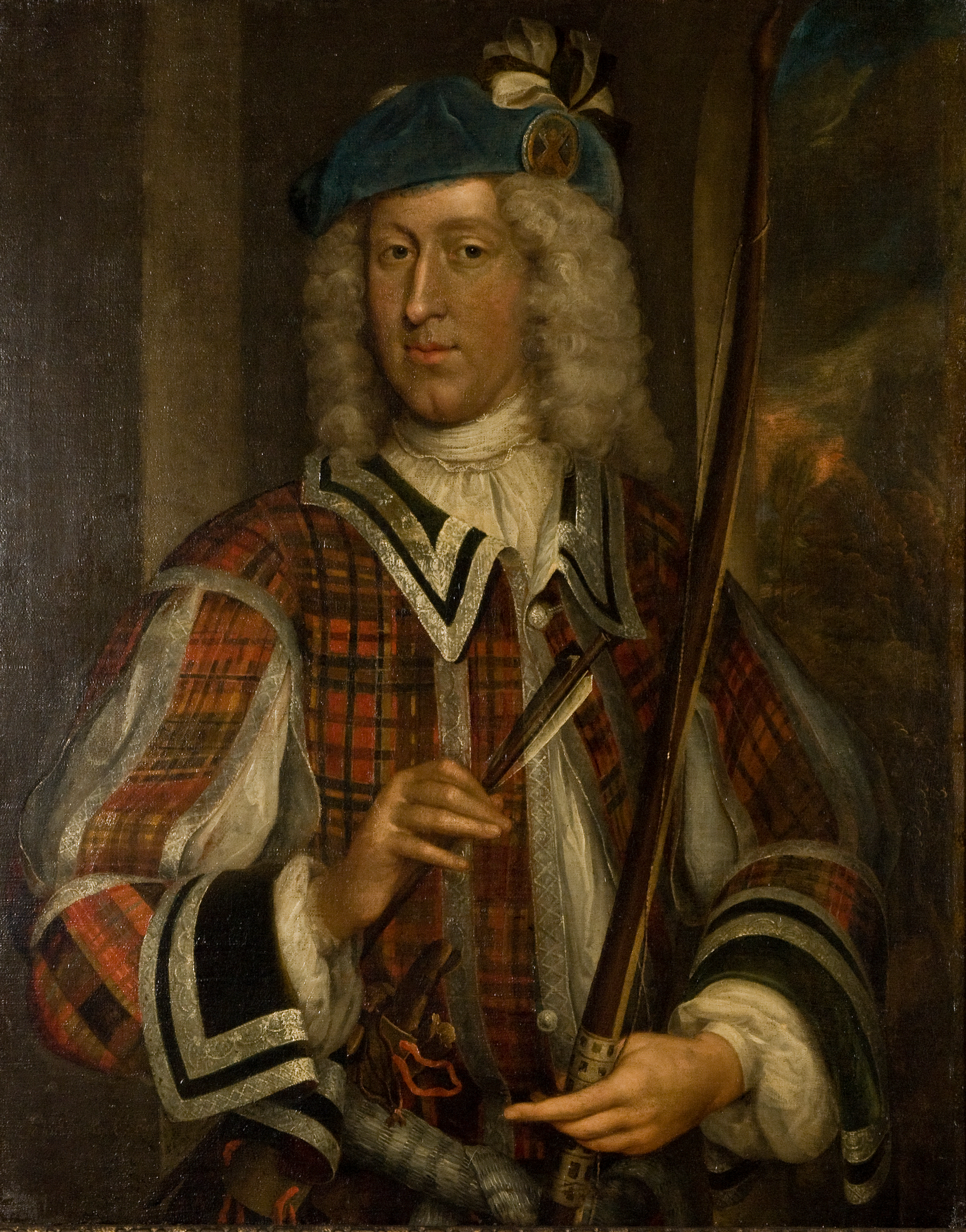
Presented to the Royal Company by Sir Henry Cook in 1926, this fine portrait in oil by a little-known artist of an unidentified officer is thought to date from around 1700. It is one of the most important and interesting pictures in the Collection for it is the earliest contemporary image of an Archer. The portrait is clearly signed ‘John de Ryck/fecit.’
‘A Checklist of Painters c 1200-1994, Represented in The Witt Library, Courtauld Institute of Art’ (1995) confirms a 17th century Dutch painter by the name of John de Ryck. Little appears to be known of him. However, throughout the 16th and 17th centuries, the leading painters to the British elite were generally a succession of incomers, especially from the Netherlands.
The detail of dress and equipment is unusually competent and sophisticated. If the artist’s dates are correct (1640-1702), then the existence of this uniform is earlier than that generally believed – 1713.
The sitter is unknown but appears to have been of high rank. John, 2nd Earl and 1st Marquess of Atholl (1631-1703) was the Royal Company’s first Captain General from 1677 until his death in 1703. There is a striking resemblance between the 1st Marquess’s son, the 1st Duke of Atholl (1660-1724), in a portrait by Thomas Murray which hangs at Blair Castle, and the sitter in de Ryck’s portrait. If the de Ryck portrait does date to 1700, then this could well be the 1st Duke of Atholl when still 1st Earl of Tullibardine, at around the age of 40. Research continues.
HM The Queen by Nicky Philipps
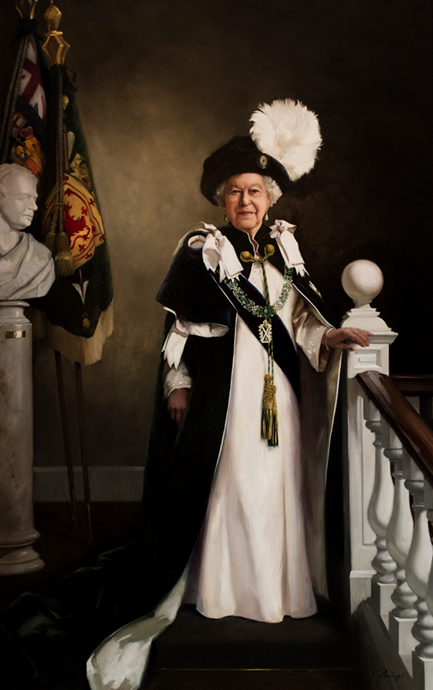
The Royal Company commissioned a portrait of Her Majesty The Queen to mark The Queen’s 90th Birthday in 2016. The Queen is wearing the robes of The Most Ancient and Most Noble Order of the Thistle and is depicted at the top of the staircase in Archers’ Hall. On the left is the marble bust of Sir Walter Scott, by Sir Francis Chantrey RA, whose energy and determination helped to establish a ceremonial role for The Royal Company for the visit to Scotland by King George IV in 1822. Behind the bust are The Colours of The Royal Company which were presented by The Queen in 1966. The portrait is full length and hangs in the dining room.
The portrait was painted by Nicky Philipps following a sitting with Her Majesty at Windsor Castle on 18 March 2016. The artist’s other work includes her portrait of Their Royal Highnesses Princes William and Harry, commissioned by The National Portrait Gallery in London and her portrait of Her Majesty The Queen for the Diamond Jubilee commemorative first class stamp. Nicky was delighted to discover a portrait of her great, great grandfather, the 10th Earl of Stair (1819-1903), President of the Council 1884-1903, on permanent display in Archers’ Hall.
The Queen, The Duke of Edinburgh and The Princess Royal attended a short reception at Archers’ Hall in the evening of 7 July 2016 in order to view the new portrait.
Principal Silver
The Queen’s Prize Badge.
The Musselburgh Arrow
The Silver Bowl.
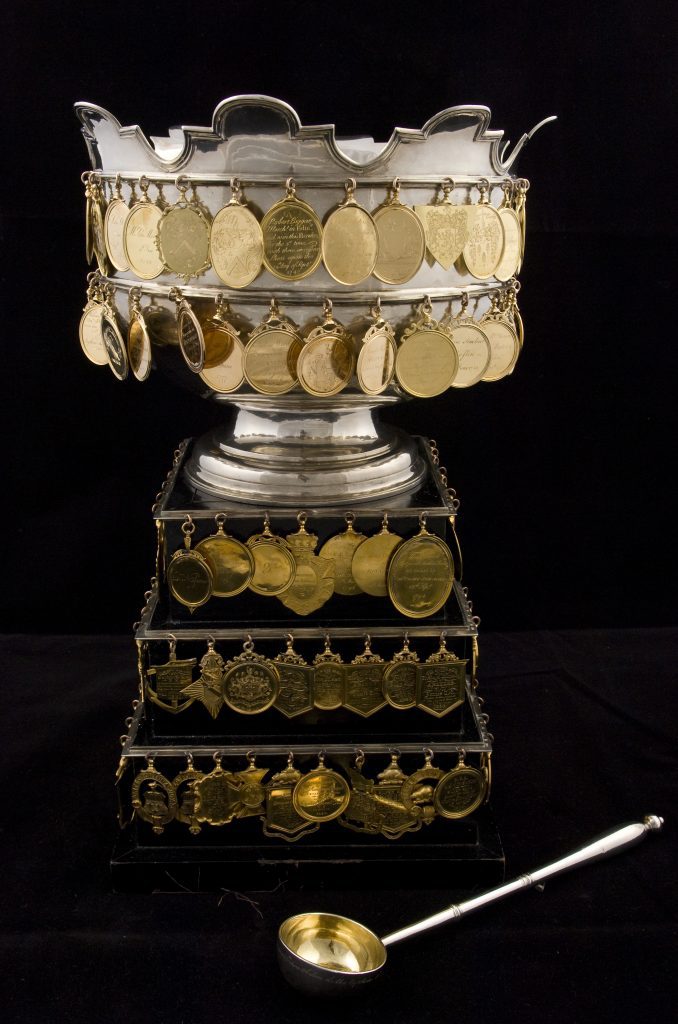 |
Shot for annually at Holyrood, at 180 yards. As the winner has to win three consecutive ends, this prize is rarely won early in the season, and continues each Monday during the summer season. In 1720, the Council instructed ‘the Thesaurer to order a Punch Bowll to be made to the value of twenty pounds sterling or thereby as ane annuall pryze to be shot for by the Royall Company at rovers only, upon such a day and manner as the Councill shall determine; which pryze is to be returned by the gainer to the Thesaurer within ten months, with his badge affixed thereto, not exceeding the value of two guineas, either of gold or silver, in the option of the gainer.’ This, the first Silver Bowl, was made by William Ged (1699-1749) of Edinburgh and bears the date mark of 1719-20. There are now three Silver Bowls all of a similar design. The badges on the first Bowl cover the years 1720-1780 while the badges on the plinth cover 1781-1886. The second Bowl’s badges cover the years 1887-1977 while the third Bowl’s badges cover the years of 1978 to date. The first winner of the Silver Bowl was James, Earl of Wemyss, the son of the Captain-General who had died shortly before. The Earl’s portrait is featured above in Principal Artwork. In November 1720, Sir John Areskine (Erskine) of Alva who ‘made offer to the Company of as much silver taken out of his mines of Alva as would make a spoon for the Punch-Bowl.’ The silver was duly extracted from Sir John’s silver mines in the Ochil Hills and the spoon (more accurately a ladle) was made. It is inscribed: ‘Regiae Sagittariorum Cohorti ex fodonis suis argenteis donavit Joannes Erskinius ab Alva, Eq. auratus: die Decem. 20, 1720.’ |
The Hopetoun Royal Commemoration Prize.
| Shot for annually at Hopetoun House, at 180 yards. It was presented by the Earl of Hopetoun, Captain General of the Royal Company, in 1823 to commemorate the visit of King George IV to Hopetoun House on his historic visit to Scotland in 1822. It consists of a handsome silver vase and a gold medal. The vase is engraved with the names of the winners and the medal remains in the keeping of the winner during the succeeding year. The makers’ mark is that of JW Howden & Co, the date mark of 1822-23 and the vase bears the inscription ‘Engraved by Hector Gavin.’ | 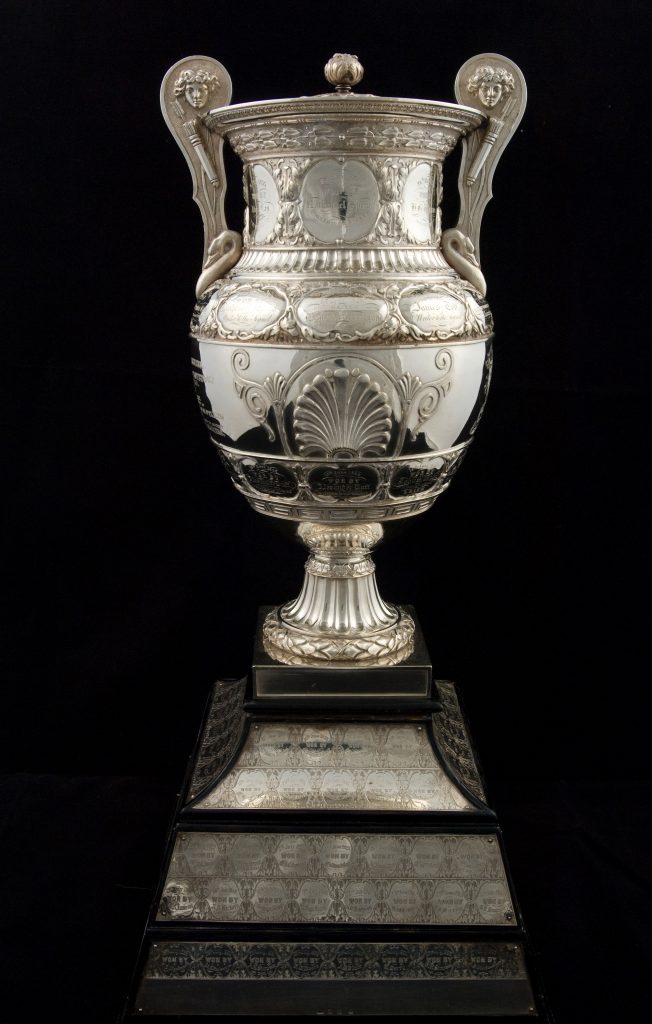 |
The Challenge Cup
The Silver Cock.
The Queen Elizabeth II Cup.
The Royal Company’s newest prize, The Queen Elizabeth II Cup was instituted as a prize by the Council of the Royal Company in 2016. It is shot for in the south at 180 yards to the same format as the main prizes shot for in Scotland. As its inception was the year of Her Majesty’s 90th birthday, it was decided to honour that occasion in the name of the new prize. Her Majesty graciously approved the use of her name and decreed that it should be called The Queen Elizabeth II Cup.

